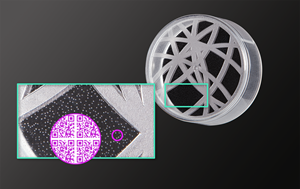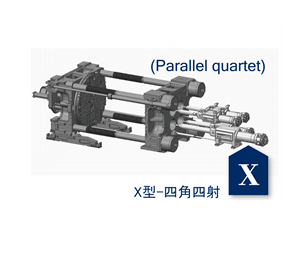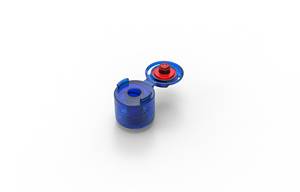11th Hour Extension to Proposed Lockout/Tagout Rule Changes
Deadline extended from Jan. 1 to Jan. 4, 2017 as stakeholders weigh the potential impact on injection machine maintenance and mold changes.
Deadline extended from Jan. 1 to Jan. 4, 2017 as stakeholders weigh the potential impact on injection machine maintenance and mold changes.
On Monday, Dec. 12, the Plastics Industry Assn. (PLASTICS; formerly SPI: The Plastics Industry Trade Association) reported that OSHA had extended a deadline for affected parties to give feedback—including requesting hearings—on changes to lockout/tagout standards for injection molding machines.
Back in November, Plastics Technology reported on the proposed changes to the Michigan Occupational Safety and Health Administration (MIOSHA) Part 62 Plastic Molding Safety Standard R408.16234, designed to help it meet OSHA’s General Industry Safety Standard Part 85 “The Control of Hazardous Energy Sources”.
This latest move, according to PLASTICS:
…would remove “unexpected” from the term “unexpected energization” in the existing general industry standard for the control of hazardous energy, lockout/tagout (LOTO; 29 CFR 1910.147). The standard applies to and establishes requirements during servicing and maintenance operations “in which the unexpected energization or startup of the machines or equipment, or the release of stored energy could cause injury to employees.”
According to PLASTICS, the rub, in part, lies in the fact that:
OSHA’s proposal would expand the applications in which lockout is required, and would present challenges in demonstrating the efficacy of automated controls that could eliminate the potential for unexpected energization and therefore eliminate the need for LOTO.
Molders I’ve spoken with on the topic are understandably reluctant to be quoted on the record regarding these changes, fearful in part of an unexpected safety inspection at their plants. I did receive some input via email from an injection molding professional whose résumé includes time on the shop floor at an injection molding operation in Michigan.
That individual noted that his company had discussions about what it would take to perform a complete lockout/tagout on an injection molding machine during mold changeovers. The biggest issue then and now was impact on downtime—specifically downtime related to barrel heating not physical tool changeover.
If a molder locks out power on a press, power to barrel heats is also interrupted. Many molders use the time it takes to change tooling to allow the barrel temperatures to “soak to the new material set points”, my contact wrote, adding:
Essentially, the new rule means that all that time for barrel heats, mold heats, and the machine’s oil temperature to stabilize will have to be completed in series and not in parallel with the physical mold change.
He went further noting that, estimates of this adding an hour to each mold change could be conservative depending on the material being run and the strictness of the rule interpretation.
If one must lockout a machine when performing a changeover, does this at some point mean the machine must be locked out anytime a person needs to put a body part into the clamping area? If this is the case, we are looking at needing to lockout the machine anytime the parting line of the mold needs to be cleaned or a runner gets stuck, or any of the 100s of other different scenarios that happen each day that require worker interaction in the clamping area.
My source said that newer machines have proven, reliable means to prevent the clamps from moving when the operator or non-operator doors are open, but older machines are “the real issue,” specifically the “30-year-old machines that still use limit switches to verify the door is closed.”
These switches can be “tricked” into thinking the doors to the clamp are closed, in ill-guided, but nonetheless, real-world attempts to limit downtime.
You might ask yourself, ‘Who in their right mind would tie back a door limit switch? that can’t be possible.’ Well it has happened, and people have made bad decisions and paid a horrible price for them. “To err is human” but a person’s punishment for the error should not have to be the ultimate one.
In its Dec. 6, 2016 email newsletter, MIOSHA reported that the 41st death of a Michigan worker for the year occurred on Nov. 30. There were 29 MIOSHA-related deaths in 2015, with the fewest back in 2009—24. As MIOSHA said in the article, and every party in this current discussion can agree, “Every life is precious. Our mutual goal must be that every employee goes home at the end of their shift every day.”
Do you have questions/feedback/information regarding this topic? Please log in and comment or send it my way: tonyd@ptonline.com.

Related Content
Mold, Hot Runner, Digitization and Process Monitoring at K 2022
The Barnes Group’s Molding Solutions division companies will highlight new mold and hot runner technologies at its own booth and at several machinery partners during K 2022.
Read MoreNew Multicomponent Injection Molding Machine Line Launches
FCS Group’s X-Type parallel quartet injection molding machine features four injection units aligned in parallel for a smaller footprint.
Read MoreMulticomponent Mold Combines Capping and Unscrewing Functions for Pharma Closure
Braunform says its patented RotaricE² mold, which will mold Luer lock pharmaceutical closures in Arburg’s K 2022 booth, allows the use of one tool and one machine, versus two, while eliminating post-mold assembly.
Read MoreFakuma 2023: Wittmann Battenfeld Expands All-Electric Line, Direct-Current Capabilities
Wittmann Battenfeld will introduce the new EcoPower B8X injection molding machine line and show direct current as an energy source for a concept machine that will power its own robot.
Read MoreRead Next
How Polymer Melts in Single-Screw Extruders
Understanding how polymer melts in a single-screw extruder could help you optimize your screw design to eliminate defect-causing solid polymer fragments.
Read MoreProcessor Turns to AI to Help Keep Machines Humming
At captive processor McConkey, a new generation of artificial intelligence models, highlighted by ChatGPT, is helping it wade through the shortage of skilled labor and keep its production lines churning out good parts.
Read More
























